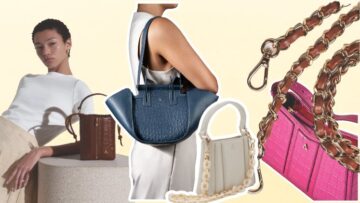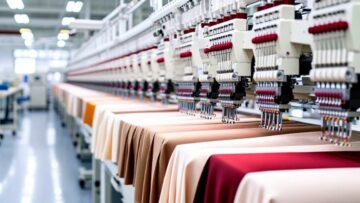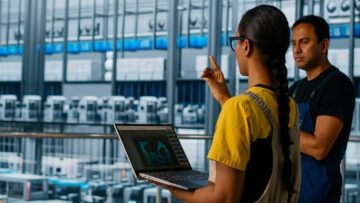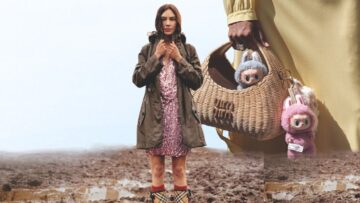
Comparatively a young retailer, Reliance Retail has emerged as one of India’s largest apparel destinations for value retail formats. The company sources a wide range of products from Bangladesh in woven and knits; however, denim is the biggest in volumes. The current volume sourced from Bangladesh is about 1.5 million pieces/annum, which accounts for 10% of Reliance’s total buy; but now the retailer is looking at increasing it to about 3 million units/annum this year. In an exclusive interview with Apparel Online Bangladesh, Vipin Tyagi, Senior Vice President, having 25 years’ experience of working with India’s top-most textile and apparel retail companies like Arvind Mills, Aditya Birla Group Prior and joining Reliance five years back, talks about the edge that Bangladesh has as a sourcing destination for shirts, T-shirts and denim products…
Excerpts from Interview
AO: What are the advantages of sourcing from Bangladesh, besides that the imports are duty free?
There are two reasons for going to Bangladesh: It’s a low cost manufacturing destination, and secondly it’s a scalable production capacity nation. In India if you have to do those kinds of volumes at low cost, you have to deal with multiple factories whereas you get solution from one roof there. Typically in Bangladesh you got 1000 to 5000 machine in one factory which is unheard of in India.
[bleft]“The next few years would see a large quantity of imports from Bangladesh into India under the treaty between the India and Bangladesh; a good number of Indian retailers will benefit from this.” – Vipin Tyagi Senior Vice President, Reliance Retail[/bleft]
Also it’s easy to import fabrics; we use the Chinese fabric and route it through Bangladesh; we use the Chinese supply chain into Bangladesh to bring the goods into India. We procure lots of yarn dyed shirts from China via Bangladesh as the country is still very competitive in this category. The advantage here is that you get differentiated fabric and of course there is cost benefit compared to other Asian countries.
The next few years would see a large quantity of imports from Bangladesh into India under the treaty between the India and Bangladesh; a good number of Indian retailers are benefiting from that and it will help the Indian textile and garment industry to become more competitive. We have to realize the fact that we have a neighbour which is highly competitive, highly scalable. There was a time, say about 6-7 years back, when India’s and Bangladesh’s exports were almost the same but now Bangladesh has surged ahead and has become second largest exporter in the world after China.
If we talk of denim, there is huge price difference between India and Bangladesh. The denim manufacturing, particularly the dry and wet processes, are labour-intensive; any labour intensive operation in India is almost double in cost, vis-à-vis Bangladesh. Secondly the skill levels: In India the industry is still at an early stage; we have good number of denim manufacturers but not many denim garment manufacturers. The efficiencies are not there, the skill levels are low whereas Bangladesh is well equipped and scalable factories in denim garmenting with good decent skills on dry and wet processes.
AO: How do you go about quality control? Have you based your QC’s in Bangladesh or you have given a standard limit of tolerance level to your vendors?
We plan to setup an office in Bangladesh by this financial year. Right now we are sending our QCs from our Kolkata office which looks after our Bangladesh sourcing right now. We do both the third party inspection as well as direct intervention.
AO: Do you source through any buying house or your own office? Do you have global sourcing team which does competitive analysis of potential country for specific product and decide which country to source from?
We work through a few buying offices in Bangladesh. These buying offices are great help as they have a relationship going with the vendors there. It helps us in identifying some good partners there; it helps us doing some ground work there; of course it means some cost to us but then till we have our own office, we need them.
We operate through four offices in India – in North we have office in Delhi and sub offices in Ludhiana and Jaipur; in West we are based in Mumbai with sub office in Ahmedabad; in South we are based in Bangalore with sub office in Tirupur; and in the East we are based in Kolkata. We’ll open our first international office in Bangladesh this year and subsequently to other countries which are low cost and competitive production centres.
AO: Do Bangladesh manufacturers make proto sample/fit sample/sealer sample and get it approved from you before starting bulk production? How good are Bangladesh manufacturers in making samples right first time? How good are Bangladesh manufacturers in quality consistency, delivery date adherence for shipment?
The advantage of Bangladesh is that all good international retailers have set-up good processes and systems in the country which are deeply embedded in their system. We do get advantage of their quality processes right from prototyping to pre production systems, to mid-line inspection followed by final line inspection. At various stages, there are samples which are withdrawn if any fault is found.
AO: Do you feel that there are certain limitations with Bangladesh in terms of minimum quality, quantity or lead times? What additional logistics expenses and additional time are incurred for importing from Dhaka? What are the modes of transport from Dhaka to your warehouse in India? Do you have warehouses in West Bengal also?
I would not rate them very high on quality but they produce pretty decent quality; we believe that quality is something which we need to work on to get it from them. Delivery is one area which is of concern; being a slightly immature supply chain they do struggle on deliveries. I guess it’s due to their own internal problems.
[bleft]We are on growth phase and at this stage even the supply chain has to keep pace with our front end requirement. Bangladesh fits very well in our bill. Normally the supply chain lags behind the demand, so Bangladesh fulfils our demand from organized low cost supply chain. [/bleft]
The transit or the logistic time is not much. It doesn’t take more than two weeks once the goods leave Bangladesh to reach anywhere in India. We are managing in 15 days right now. We work through road transport to ferry in our products. We have also tried the sea route but we prefer working through land route as it has worked perfectly and we would like to do more of it.
We have warehouses in Kolkata, Delhi and Bangalore and Baroda; there are four warehouse locations for our retail operations. Most of the goods are transited through Kolkata.
Since the duty free imports were allowed in India from Bangladesh, the imports in India from Bangladesh are increasing despite rupee depreciation; there is definitely a value add and we do feel that a value retailer like us which is in a major growth expansion phase, this kind of opportunity is really good for us. The only concern is rupee depreciation which is close to 15 to 20% before we started our operations.
AO: Is the entire transaction done in dollars between India and Bangladesh?
Yes, currently it is done in dollars. We are talking to the BGMEA (Bangladesh Garment Manufacturers & Exporters Association) to allow business to happen in Rupee and Taka because if the foreign currency (dollar or Euro) fluctuates then why the business between two countries, with their own currencies, should fluctuate? This would be really in the interest of the business as a lot of apprehensions which many importers in India have because of the currency fluctuation that would be slightly moderated by this.
 Reliance Retail Limited (RRL), a subsidiary of RIL, was setup to lead Reliance Group’s foray into organized retail. Since its inception in 2006, Reliance Retail Limited (RRL) has made rapid progress towards building an entire value chain starting from the farmers to the end consumers. In the last FY, Reliance Retail’s revenue touched a whopping figure of Rs. 7,599 crore. (US $ 1.4 billion).
Reliance Retail Limited (RRL), a subsidiary of RIL, was setup to lead Reliance Group’s foray into organized retail. Since its inception in 2006, Reliance Retail Limited (RRL) has made rapid progress towards building an entire value chain starting from the farmers to the end consumers. In the last FY, Reliance Retail’s revenue touched a whopping figure of Rs. 7,599 crore. (US $ 1.4 billion).
The company already has presence in 13 states of India and in 60 cities with 93 stores with more than 1.5 million sq. feet retail space which the company claims to be the largest retail footprint. Growing at fast pace, Reliance is looking at adding good number of stores this year. In last three consecutive years, Reliance is doubling its turnover; the retail giant is expecting to cross Rs. 1000 crore in its (fashion retail) turnover this FY.
Reliance Brands also announced exclusive licensing arrangement with two leading international brands: Steve Madden, a leading designer, wholesaler and retailer of fashion-forward footwear and accessories for women, men & children and Quiksilver, a leading outdoor sports lifestyle company to launch their core brands ‘Quiksilver’ and ‘Roxy’.






